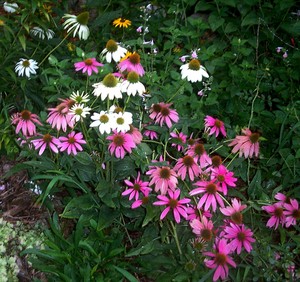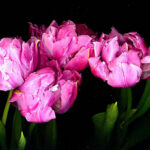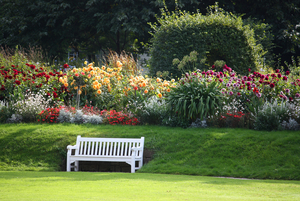Daffodils, tulips, and other assorted bulb plants will soon be blooming in most parts of the U.S. Here in Mobile, Alabama, I have already picked several bouquets of paper whites and one nice large bouquet of daffodils. However, these flowers don’t just happen all on their own. While bulbs require little care, there are a few things you should do in order to have healthy flowers year after year.
The most important thing you can do for your bulbs is choose a proper planting site. If you planted bulbs last fall and you don’t get much of a flush this spring, you might want to consider transplanting them after they’ve finished blooming. Bulbs do not like overly damp conditions, so if you’ve planted your bulbs in a bog or in any spot with poor drainage, you’ll quickly learn what it means to have your bulbs rot away.
On the other hand, don’t go disturbing your bulbs unnecessarily. Bulbs don’t require lots of sun. In fact, you can plant them under deciduous trees so that they only receive sunshine when the tree is bare which will also be when the bulb is first popping up out of the ground. The bulb could care less if it is in total shade when it is dying back for the summer so long as it received a bit of sun during the time it was blooming; so don’t fret too much about the sun issue. Proper drainage is the most important factor in choosing a planting site for bulbs, especially tulip bulbs. Overcrowding and poor drainage are the only reasons you should disturb your bulbs.
While on the subject of overcrowding, if you’ve had beautiful flowers year after year and suddenly notice that flower production is greatly reduced, it may be due to overcrowding. Bulbs planted in good conditions, even those planted several inches apart, need to be divided every few years. This is because the bulbs themselves have reproduced and you now have a little family of bulbs all crowded together in the area you had meant for just a few bulbs.
Besides transplanting, (and remember, only disturb the bulbs when absolutely necessary) one thing you can do to ensure healthy flower production is to fertilize your plants. You can purchase fertilizer specifically for bulbs, but most spring bulbs will be satisfied with Epson salts. Simply scatter the salts on the flower beds when the plants first start peeping out of the soil. You may water the salts in, or, if you’re able to time it well, scatter the salts right before a rain.
The number one thing you can do for the bulbs to make sure you have healthy flowers year after year is to know how to care for the foliage each year. Do not cut off the foliage. The foliage needs to die back naturally because this is how the bulb is fed and prepares itself for the next year. So many gardeners ruin their chances of pretty bulbs for the next year because they become impatient and chop off the dying foliage. I don’t blame them really – the brown foliage is rather ugly. But there is a better way.
When the foliage first becomes pliable, take several pieces in your hand and braid them. Then take the braided piece of foliage and push it down to the ground and cover it with mulch. It will die off just as easily in this position as it would standing up straight, but this way you won’t have to look at it as it goes brown.
This is also a good opportunity to plant some perennials in front of your daffodils. Consider daylilies which would be popping up out of the soil at about the time your daffodils and tulips are dying back. The daylilies foliage would then help cover up the dying foliage from the daffodils and tulips.
But if you’re going to go to all that trouble, throw a few oriental lilies in while you’re at it. You’ll be thrilled with their fragrance in the heat of the summer. Just remember that they, too, are bulbs and if happy, they will multiply!









